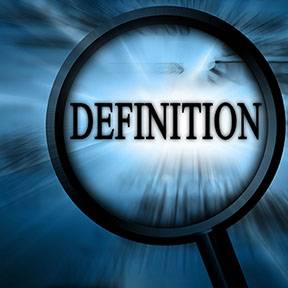The From Line
Last week we talked about the Email Monetization Model as a whole. Now, let's look at the three Types of Monetization.
First, we've got Display Advertising, the most basic and easiest way to monetize your email newsletters. Display ads are based on IAB standards and advertisers usually have ad units ready to go. The two best IAB banner ad sizes for design and performance in email are 300x250 and 728x90.
Successful email monetization is not an afterthought or separate function of email content development and operations. Maximizing email monetization is dependent on how well it’s integrated into your overall email newsletter strategy. With a well executed monetization strategy, your subscribers should view content and advertising equally. In other words, your goal for email monetization should be for your subscribers to value advertising as much as they value your content. This is obviously easier said than done. However, with a few tricks and and quality effort, you can create a great inbox experience greatly evening subscriber optics of content vs. advertising.
About This Infographic:
Despite the fact that publishers and advertisers can agree on what native advertising is in its legacy print format, there’s still much confusion in the industry when native advertising transcends the digital space. Gold Lasso believes the reason for this confusion stems from the sheer number of variables that can be manipulated in a digital ad. To help publishers and advertisers wrap their heads around what defines a native ad, we developed this simple scale that takes into consideration both publisher and advertiser standards and characteristics. The scale demonstrates that native ads are defined by the degree that advertisers relinquish creative and formatting control to the publisher. Are some ads more native than others? We think so.
Use This Graphic for FREE on Your Site!
You may use the infographic above on your website, however, the license we grant to you requires that you properly and correctly attribute the work to us with a link back to our website by using the following embed code.
href="/images/easyblog_articles/368/b2ap3_thumbnail_native-scale.png" target=" "_blank">img src="/imaes/easyblog_articles/368/b2ap3_thumbnail_native-scale.png" alt=" "infographic" width="430" />
Click to Enlarge
Via Gold Lasso, Subscriber Engagement & Monetization Systems
Infographic Thumbnail

As the definition of native advertising continues to take form, one thing that remains constant is that native advertising’s success is relegated to publisher standards of quality and experience. Even as advertisers arm themselves with advanced analytics and programmatic buying, the continuous shrinking of display’s performance reveals in some aspects, a negative correlation between advertiser standards and the dwindling engagement they produce. The digital success of native advertising is proof that advertisers must trust that publishers know their audience better than they do when they are in the publisher’s forum. It’s true that advertisers have more of a holistic view of their customer by their ability to collect and analyze data across different channels and sources. However, the publisher is the ringmaster at a particular moment in time with its direct finger on the customer’s pulse. After all, consumers go to publishers to consume content, not ads, right?
Native Advertising Is A Culture
Even as certain aspects of native advertising become programmatic, we should be hopeful that publisher formatting characteristics, the ones that lend themselves to a quality experience, continue to remain in the publisher's control. At the same time, publishers must realize that native advertising is a culture, not a format. It’s a culture that tells an advertiser’s story using the publisher’s core competencies in a way that will resonate best with the publisher’s audience. Therefore, native advertising is the cooperation of a publisher’s editorial, advertising and production departments to create the best possible experience for their consumers. Gone are the days of the siloed church and state mantra between advertising and journalism. Millennials are quite aware that journalistic integrity has been compromised by scandals and editorial bias and they are at peace with advertising’s role – as long as it doesn’t interfere with their experience of content consumption.
Consumer's Insatiable Demand For Experience
The publishers that move with this cultural shift in content consumption could reap unprecedented margins as the market could produce a winner take all phenomenon in their respective media niches. The technologies that once fragmented media could eventually consolidate it as Millennials chase the best possible experience. Those publishers who embrace this shift by perfecting the experiences they create could eventually attract the majority of audience for their niche. Native advertising is a necessary part of that experience. It melds together the objectives of the advertiser with the creativity of the publisher in such a way that advertising is noticeable, entertaining, but most important, easily digested.
How Will Native Advertising Scale?
As the industry wobbles down the native advertising path, the biggest challenge for both publishers and advertisers alike is scale. Publishers are starting to play a pivotal role in helping advertisers produce content that appeals to their audience, but scaling production across hundreds of advertisers is a difficult task. Additionally, as advertisers relinquish their grip on creativity, scaling their audience reach in native formats have been proven futile. Programmatic technologies and industry standards will help both publishers and advertisers to achieve native scale, but only to a point. Native display, sponsored content and other formatting initiatives that contain native elements definitely facilitate scale, however true native advertising is an experience that only the publisher can provide. Culture and creativity are the epicenter of native advertising, characteristics that cannot reside with the advertiser.




